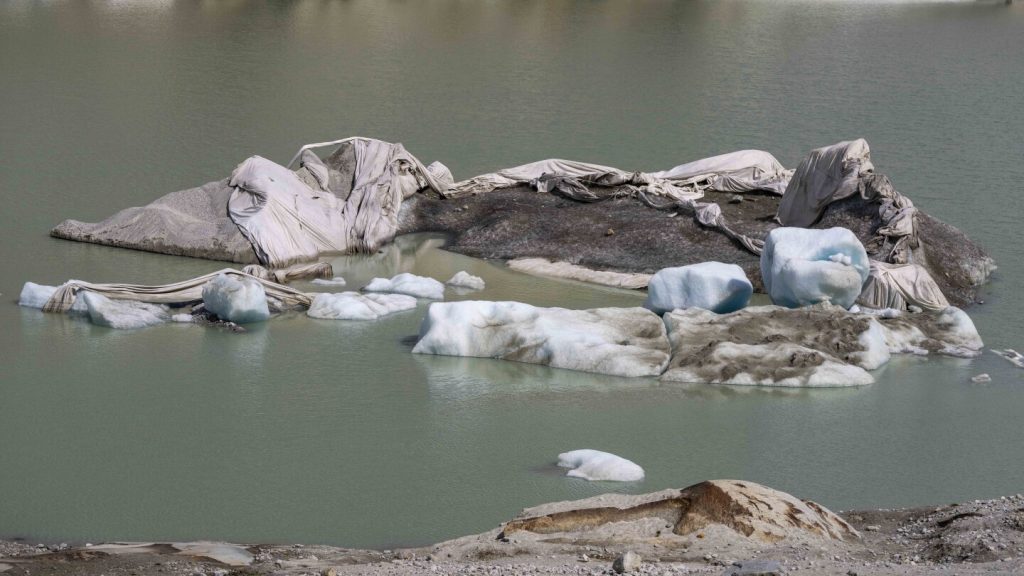Switzerland’s glaciers experienced another summer of shrinkage, with a loss of 2.5% of their volume this year due to high temperatures in July and August. The impact of climate change, combined with dust from the Sahara Desert, has led to a continued decline in the glaciers, despite favorable conditions earlier in the year. The Glacier Monitoring in Switzerland network reported that more than half of the monitored glaciers lost their snow coverage throughout the summer, with some experiencing melt rates of a meter or more.
Experts attribute the glacier shrinkage to three main factors: high average air temperatures in July and August, good weather with no fresh snow, and southwesterly winds in the winter and spring that brought Saharan dust to the Alps. This dust caused a warming effect on the ice, further accelerating the melt rates. Switzerland is home to the most glaciers in Europe, and saw a 4% decrease in glacier volume last year, following a 6% drop the year before. The ongoing retreat and disintegration of glacier tongues highlight the continued impact of climate change on the region.
The Swiss Academy of Sciences highlighted the record loss of ice in August, as temperatures rose and glaciers continued to shrink. The loss of 2.5% of glacier volume was higher than the average levels seen over the last decade, indicating the severity of the current situation. Despite an extra layer of protective snow cover from a snowy winter, the glaciers were unable to withstand the heat and dust from the Sahara Desert, leading to significant melt rates. The impact of climate change on Switzerland’s glaciers is clear and concerning, with no signs of improvement in the near future.
The Glacier Monitoring in Switzerland network, known as GLAMOS, pointed to the rapid disappearance of snow coverage on many glaciers over the summer. Glaciers such as Plaine Morte, Gries, and Silvretta experienced significant melt rates, further contributing to the overall loss of glacier volume. The effects of climate change are visible in the accelerated melting of glaciers, threatening not only the natural landscape but also water resources and ecosystems that rely on glacial meltwater. The situation calls for urgent action to address the root causes of climate change and mitigate its impact on Switzerland’s glaciers.
Switzerland’s glaciers are a key indicator of the effects of climate change on the region, with the continued shrinkage highlighting the urgency of addressing environmental issues. The loss of glacier volume, particularly in recent years, is a concerning trend that has significant implications for the country’s environment and economy. As one of the countries with the most glaciers in Europe, Switzerland plays a crucial role in understanding and addressing the impacts of climate change on natural landscapes. Efforts to reduce greenhouse gas emissions, protect natural habitats, and promote sustainable practices are necessary to preserve the glaciers for future generations.
The Swiss Academy of Sciences emphasized the need for continued monitoring and research to track the changes in glacier volume and understand the underlying causes of glacier shrinkage. With the effects of climate change becoming increasingly apparent, it is essential to take proactive measures to mitigate its impact on Switzerland’s glaciers and natural environment. The findings from this year’s glacier monitoring serve as a stark reminder of the urgency of addressing climate change and its effects on glaciers, calling for collective action to protect these vital natural resources.


